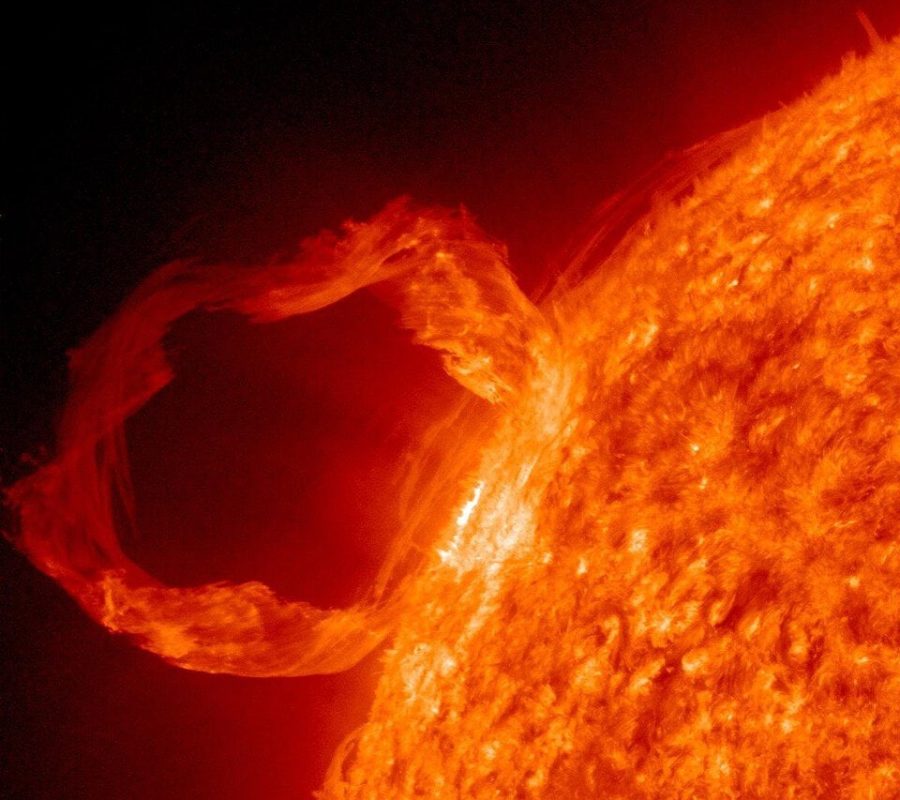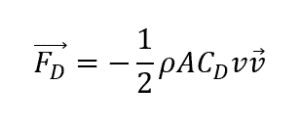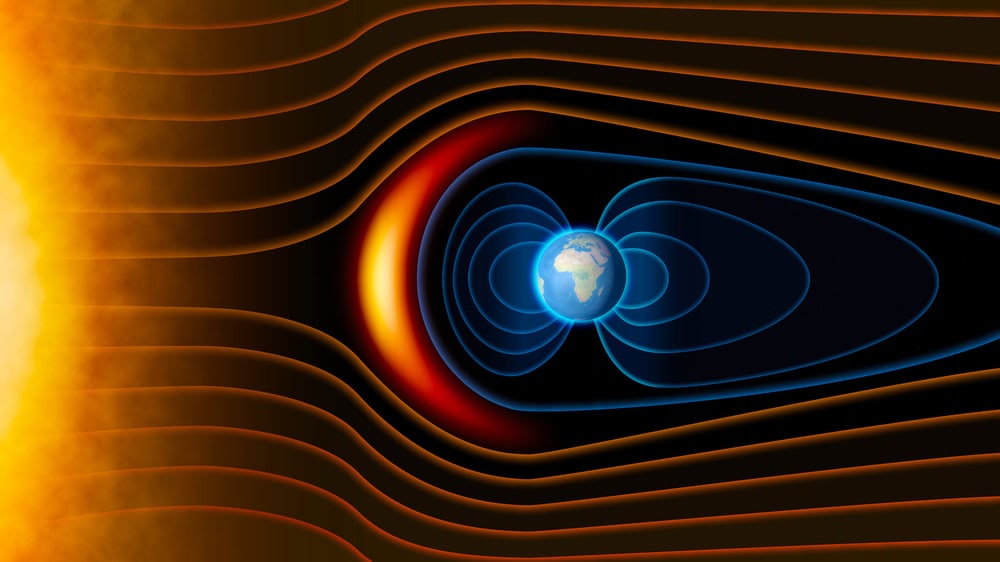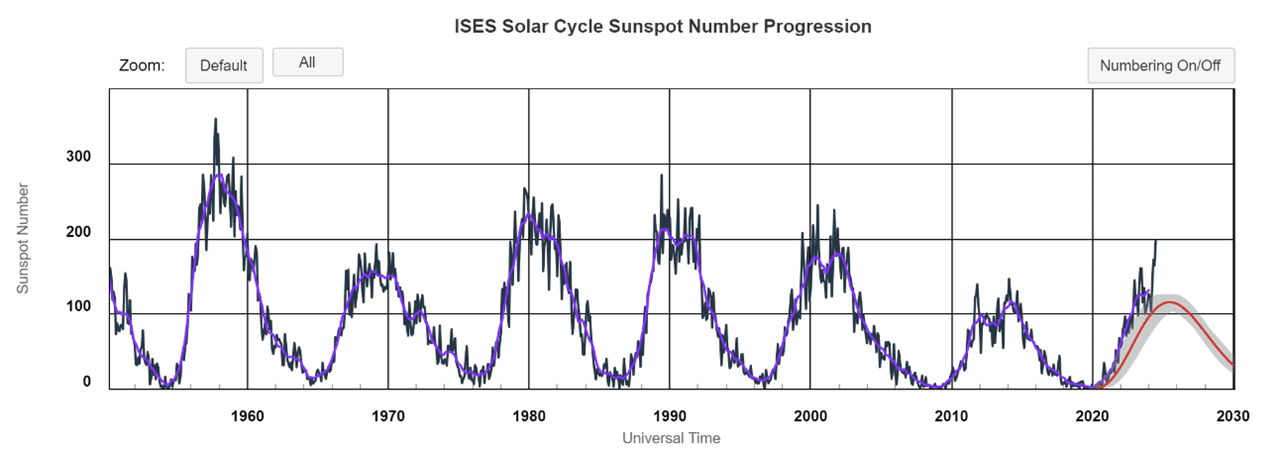If you are living somewhere above 45 degrees North, or even further South, you have probably seen or heard a lot about northern lights (aurora borealis) this year.
This is because the solar activity has been very high this year, which is a returning phenomenon that not only produces very beautiful photos, but also has a huge impact on human space activity, in particular the satellites orbiting Earth, including our Sternula-1 satellite.
Solar activity (solar storms) impacts the atmosphere much like hurricanes affect the oceans. Just as hurricanes create waves and turbulence that can halt ships, solar storms disturb Earth’s magnetic field, causing satellites to lose altitude and potentially malfunction.
During a hurricane, ships may be forced to stop or change course to avoid damage from high winds and rough seas. Similarly, satellites face increased drag in the upper atmosphere during a solar storm, causing them to gradually lose altitude.
If severe enough, this can lead to orbit decay, requiring corrective action to prevent re-entry or damage. Both ships and satellites depend on precise navigation, and storms, whether on Earth or in space, can disrupt their paths and operations.
CMEs are massive bursts of solar wind and magnetic fields rising above the solar corona or being released into space. Imagine them as gigantic bubbles of plasma spewing out from the Sun’s outer atmosphere. When these clouds of charged particles collide with Earth’s magnetic field, they can trigger geomagnetic storms.
The Sun isn’t a constant beacon of light; it’s a dynamic, evolving star with an approximately 11-year cycle known as the solar cycle. During this period, the Sun goes through phases of high and low activity. It’s marked by varying numbers of sunspots, which are essentially the Sun’s “hot spots” – regions of intense magnetic activity.
When the Sun is in its “solar maximum” phase, the number of sunspots peaks, and so does solar activity. This period brings a higher frequency of solar flares and coronal mass ejections (CMEs). Conversely, during “solar minimum,” the Sun’s activity wanes, leading to fewer sunspots and less intense solar phenomena.
Solar flares are explosive bursts of radiation that occur when the Sun’s magnetic fields suddenly realign. They release vast amounts of energy across the electromagnetic spectrum, from radio waves to X-rays. These flares can cause radio blackouts and, in severe cases, impact satellite electronics and power grids here on Earth.



This brings us to the Van Allen radiation belts – two doughnut-shaped regions of high-energy particles surrounding our planet, held in place by Earth’s magnetic field. They start about 600 kilometers above the Earth’s surface, which is notably higher than the altitude of most satellites. Essentially, the belts are regions of the magnetosphere with concentrated radiation particles, preventing the brunt of solar storms from reaching the surface of Earth.
When a CME hits Earth’s magnetosphere, it can cause the belts to become more active and even expand. Despite their protective role, satellites in low Earth orbit (LEO) are somewhat shielded from the direct impact of solar storms by the Van Allen belts. However, higher-altitude satellites and spacecraft within the radiation belts can experience increased radiation levels and may require additional shielding or operational adjustments.
Satellites in low Earth orbit (LEO) are generally below the altitude where the Van Allen belts have the most intense radiation. As a result, they avoid the worst effects of solar storms. Still, satellites in higher orbits and astronauts on space missions need to be mindful of solar activity, as they might encounter more direct impacts from solar particles and radiation.
In low Earth orbit, satellites experience aerodynamic drag, a force that acts opposite to their motion through the atmosphere. The magnitude of this drag force is given by:

To better understand how the atmospheric density ρ and the satellite velocity v influence the drag, here is a little mind experience to conduct:
For ρ, we can imagine ourselves running on the ground (surrounded by normal air) and by water (about 773 times more dense than air). That way we can easily understand that the more dense the medium we are in, the more difficult it is to move around.
For v, we can imagine poking our arm out of the window of a car. As the car accelerates (increases in velocity), it becomes harder to keep it steady as the air pushes it back.
In vector form, the negative sign indicates that drag force is opposite to the direction of velocity.
The thermosphere, which starts around 80 kilometers above Earth, is particularly sensitive to solar activity. During solar storms, increased high-energy radiation from the Sun heats the thermosphere, causing it to expand. This expansion results in higher atmospheric density at altitudes where the atmosphere is normally sparse.
Consequently, the increased density enhances aerodynamic drag on satellites. Satellites in low Earth orbit experience more significant drag forces, leading to accelerated orbital decay. Essentially, the thermosphere’s response to solar storms amplifies atmospheric drag, making it more challenging for satellites to maintain their orbits.

Even with advanced models to predict solar activity, such as forecasting sunspot cycles and estimating potential geomagnetic storms, the behavior of the Sun remains inherently chaotic. Predicting solar activity is somewhat like trying to forecast the weather on a giant, roiling ball of plasma with complex magnetic fields. Despite our sophisticated algorithms and simulations, solar activity can still surprise us, adding a touch of unpredictability to our understanding of space weather.

Published on 13/09/2024, Written by: Cyriaque Guillot, Ivan Conti